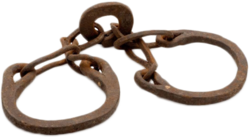| Part of a series on |
| Forced labour and slavery |
|---|
 |
Voyages: The Trans-Atlantic Slave Trade Database is a database hosted at Rice University that aims to present all documentary material pertaining to the transatlantic slave trade. It is a sister project to African Origins. [1]
Contents
The database breaks down the kingdoms and countries that engaged in the Atlantic trade.
| Country | Enslaved persons |
|---|---|
| Portugal | |
| Great Britain | |
| France | |
| Spain | |
| Netherlands | |
| United States | |
| Denmark |
By 2008, the project had gathered data on nearly 35,000 transatlantic slave voyages from 1501 to 1867. For each voyage they sought to establish dates, owners, vessels, captains, African visits, American destinations, numbers of slaves embarked, and numbers landed. They have been able to find much of this material for an estimated 80 percent of the entire transatlantic African slave trade. With corrections for missing voyages, the Project has estimated the entire size of the transatlantic slave trade with more comprehension, precision, and accuracy than before. They reckon that in 366 years, slaving vessels embarked about 12.5 million captives in Africa, and landed 10.7 million in the New World. A horrific discovery is a careful estimate that the Middle Passage took a toll of more than 1.8 million African lives. In this quantitative database, the numbers are enslaved people. [3]